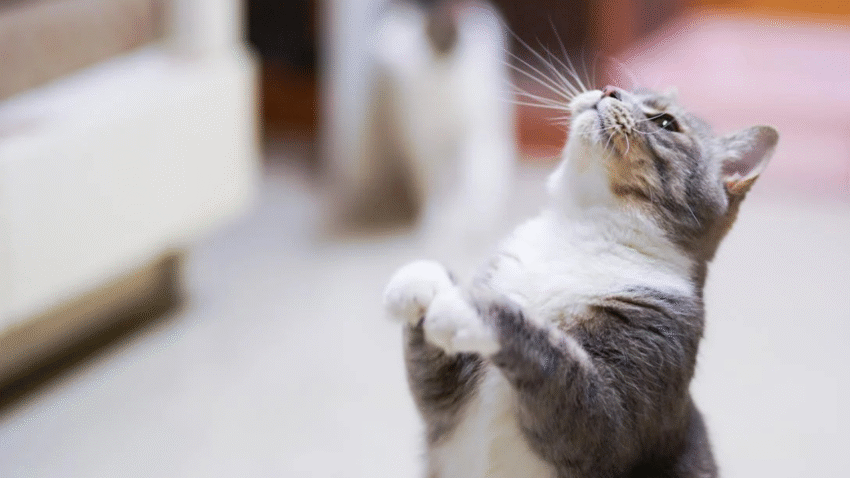Introduction
Is your kitten suddenly biting everything in sight or drooling more than usual? These may be signs that your kitten is teething. In this guide, you’ll learn how to handle teething in kittens, including what to expect, how to soothe their discomfort, and how to prevent destructive chewing. If your little feline seems unusually fussy, teething might be the reason—and we’ll walk you through how to help.
Why Teething Matters for Kittens
Just like human babies, kittens go through a teething phase where their baby teeth fall out and adult teeth grow in. This usually happens between 3 to 6 months of age. During this period, they may experience sore gums, increased chewing, and changes in behavior.
Understanding and managing this stage is important because:
- It prevents damage to household items from chewing
- It helps establish good biting and chewing habits
- It supports dental health and development
- It reduces stress for both kitten and owner
By addressing teething needs early, you also lay the groundwork for lifelong oral care.
Step-by-Step Guide to Handling Teething in Kittens
Step 1: Recognize the Signs of Teething
Common signs your kitten is teething include:
- Chewing on furniture, fingers, or toys
- Drooling or wet chin
- Occasional bad breath
- Slight bleeding from gums (especially after chewing)
- Mild irritability or fussiness
- Eating slower or showing reduced interest in food
Teething can last several weeks, so spotting the signs early helps you manage it better.
Step 2: Provide Safe Chewing Alternatives
Give your kitten appropriate items to chew so they avoid damaging cords or furniture.
Best teething toys:
- Soft rubber kitten chew toys
- Fabric toys cooled in the fridge
- Small rope toys (supervised use)
- Teething rings made for kittens or small dogs
DIY option: Wet a clean washcloth, twist it, and freeze it for a gentle gum-soothing chew.
Always supervise your kitten with any new toy until you’re sure it’s safe.
Step 3: Soothe Their Gums
Sore gums can make your kitten irritable. Help them feel better with these tips:
- Gently rub their gums with a clean, damp finger or soft cloth
- Offer chilled (not frozen solid) toys to reduce inflammation
- Mix in soft or wet food if dry kibble seems painful to chew
- Avoid medicated gels unless prescribed by a vet
Make teething a positive experience with gentle reassurance and affection.
Step 4: Maintain a Consistent Feeding Routine
Your kitten’s appetite may decrease slightly due to gum discomfort, but it’s important they keep eating. Stick to a regular feeding schedule with easy-to-chew food:
- Use wet kitten food or moisten dry kibble with warm water
- Offer smaller portions more frequently if needed
- Watch for signs of significant weight loss or refusal to eat
If your kitten refuses food for more than 24 hours, call your vet to rule out any complications.
Step 5: Start Good Dental Habits Early
Teething is a great time to get your kitten used to having their mouth handled, which helps with future dental care.
- Gently lift their lips to check tooth growth
- Get them comfortable with pet-safe toothbrushes (no paste yet)
- Massage their gums lightly with your finger
- Introduce dental treats after adult teeth come in
Making dental care part of their early routine sets them up for a lifetime of better oral health.
Common Mistakes to Avoid
- Ignoring destructive chewing
Kittens will chew regardless—don’t wait for them to ruin something before offering a better option. - Letting them chew unsafe items
Avoid strings, cords, or hard plastic items that can splinter or cause choking. - Using human teething products
Never use baby teething gel, aspirin, or numbing agents. They can be toxic to cats. - Skipping vet checks
If adult teeth aren’t growing in by 7 months, or baby teeth don’t fall out, consult your vet. - Punishing biting
Teething isn’t bad behavior—it’s instinctual. Redirect chewing calmly to a toy instead of scolding.
Extra Tips & Recommendations
- Monitor lost teeth: You may find tiny teeth on the floor or in toys—this is normal and not painful.
- Use cat-safe teething rings designed for kittens or very small dogs.
- Stay patient: Teething doesn’t last forever. Most kittens finish by 6–7 months old.
- Link: Want to prevent biting habits long-term? Read our [Guide to Stopping Destructive Kitten Behavior].
Conclusion
Handling teething in kittens is all about understanding their needs and redirecting their behavior in a safe and supportive way. With proper toys, gentle care, and a little patience, you’ll help your kitten through this uncomfortable phase while building habits that last a lifetime.
Support them during this critical growth stage and they’ll grow into a calm, healthy adult cat—with sparkling teeth to match!
